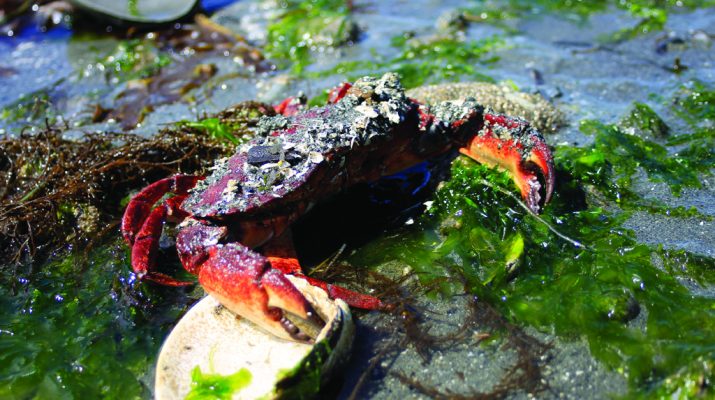One of the most spectacular low tides of the year and there is a bunch of soggy cardboard everywhere.
That was my first impression as I walked onto the beach with my family last month at Saltwater State Park near Seattle. Wet sand and pools of water left there by the retreating water of Puget Sound are known for their diversity and abundance of marine life. So, after noticing a couple dozen of the round, grayish 6-8-inch shapes, I picked one up. Like testing whether an item is plastic or paperboard at the Keep Alliance Beautiful Recycling Center, I tore the edge. Nope, not wet cardboard. My intention was to ask one of the volunteer naturalists about the objects, but when I caught up with my wife again she explained the objects were collars discarded by moon snails. Soon we found a few of their shells, then my son plucked a large, live specimen from near the waterline with its foot still out. We brought this discovery, and a handful of others, to the beige-vested naturalists for more information then put the animals back.
Seeing how people recycle or embrace green energy and transportation is fun while traveling or on vacation. I also like to notice how well a particular ecosystem is faring. Over two weeks we spent time in the high desert, mountains, rain forest, urban and rural settings, at the ocean and even most of the day on an island. Still, that intertidal zone (a five-minute walk from our campsite) represented the best view of the nexus between humans and wildlife.
A guide we picked up printed through the Seattle Aquarium encourages readers to “Explore our Puget Sound beaches”. Below an illustration of the zone inside the cover, the message begins: Puget Sound is in trouble! But we can all take action to help restore it to health. The next paragraph spells out consequences of increasing pollution such as killing marine life and smaller salmon run and the associated economic impact. There are more than 2,500 miles of shoreline there and four million people who live in the region. Finally, the guide suggests four ways to reduce pollution as residents “Take action to save the Sound.” The remainder of the pages contain useful photos and descriptions of “who (and what) lives in the intertidal zone”.
In retrospect, it seemed like life was abundant on the relatively clean Saltwater State Park beach. The locals make no bones about their challenges with pollution and the severity of the issue throughout the world’s oceans is well-documented. However, it was the best experience I’ve ever had meeting so many small to tiny sea creatures at one time and place.
The lower the tide, the more the curtain is pulled away on this amazing habitat. After arriving late the night before, we looked up the local tidal schedule during breakfast. Turns out it was a couple hours yet till the lowest point. We would later learn that the tide was one of the best in years – a 3.8. The next day, when we were gone whale watching, it was even better reaching a 4. The closer you looked the more plants and animals were revealed. Crabs were most abundant, live ones kept still in the surf to avoid the gulls as quarter-sized relatives swam together and hid under barnacle-covered rocks. Anemones and mussels also clung there with a range of mollusks. My daughter found two species of sea star – one orange with red splotches and one purple – at least a foot across. I held a gunnel (eel-like fish) the size of a twist-tie. Following the rules, everything from bleached cockle shells to slick kelp was left for others to enjoy.
I may never return to that beach, yet I hope the people who share it with the marine life there do “save the Sound.” Just a drop in what could be a much cleaner ocean.

